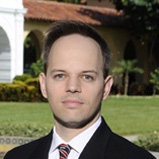Yearly Archives: 2022
Nov 21, 2022 Marco JimenezLexRemedies
In a recent essay, Preliminary Damages, Professor Gideon Parchomovsky and Justice Alex Stein have not only come up with a creative way to help indigent and/or poorly-financed plaintiffs finance their lawsuits against intransigent and deep-pocketed defendants, but in the process, they have plugged an important philosophical gap in the remedies literature by proposing the novel remedy of “preliminary damages,” a legal remedy mirroring its equitable counterpart “preliminary injunctions.” There is a lot in this essay that should be of particular interest to Remedies scholars. This Jot cannot do justice to their piece in so short a space, but I hope to offer the reader at least a small taste of this delicious article, which may entice some readers to sit down and enjoy the full course.
In short, their argument is as follows: it is a mere historical accident that courts of equity, whose primary form of relief was the injunction, and courts of law, whose primary form of relief was money damages, grew up independently. However, as these two courts have long since been merged in most states, there is no good reason for a court today to offer one type of remedy (i.e., preliminary injunctions) that happens to have developed in a court of equity while failing to offer its legal counterpart (i.e., preliminary damages). Or, as the authors ask in their article, “If courts can award plaintiffs preliminary injunctions before the conclusion of a trial, why can’t they award preliminary damages? Or, contrariwise, if no damages can be awarded until liability is found, how is it that preliminary injunctions can be granted?” (P. 242.) The answer, to be sure, is purely historical, and by bringing this new form of damages to the attention of judges and scholars, they hope to not only correct this historical anomaly, but to make it easier for indigent plaintiffs to overcome the sometimes nefarious tactics of sophisticated defendants whose deep pockets, intransigence, and policy of “deny, delay, defend,” (P. 256) rather than the strength of their defense, keeps many legal wrongs from being righted by our courts. Continue reading "Expanding the Remedial Toolbox: A Legal Analogue to Preliminary Injunctions"
Nov 18, 2022 Scott CummingsLegal Profession
New Legal Realism Goes to Law School is a chapter in a book on New Legal Realism (NLR)—a jurisprudential movement studying the role of law in everyday life through empirical methods—that takes on the specific question of how to advance the self-defined NLR aspiration to “integrate law and social science to form a truly interdisciplinary approach to law.” (P. 191.) In this piece, Taylor Poppe focuses on one possible way of advancing that goal: improving the teaching of empiricism (and interdisciplinarity through empiricism) in law school by not just training “empiricists to communicate with lawyers and legal scholars, but also…building the bridge from the other side.” (P. 192.) To do so, she argues that NLR “must convince legal scholars and practitioners of the value of interdisciplinarity and must ensure they are equipped with the skills and knowledge needed to engage with empirical data and analysis,” leading her to consider changing legal education through “the inclusion of training in empirical methods in the law school curriculum, the adoption of evidence-based inclusive pedagogy, and the integration of social science insights into the explication of legal doctrine.” (Id.)
Taylor Poppe begins by canvassing impediments to greater interdisciplinary integration. And this is something she is quite good at: crystallizing the existing landscape by pulling together different types of materials and showing how they work together to create interlocking barriers. For example, she lays aim at the ABA, which does not promote engagement with empiricism in its accreditation standards, and critiques “the formal and hidden curricula of law school and the dominant pedagogical techniques,” (P. 194) particularly the Socratic method and winner-take-all-exam, arguing that the “continued use of these methods despite awareness of their flaws represents a profound dismissal of empirical knowledge.” (P. 195.) This, along with the rejection of evidence-based policy analysis, results in law school teaching “future lawyers and legal scholars that law stands apart as a discipline, that conclusions about the functioning of law in the world do not require recourse to empirical evidence, and that neither law-making nor legal practice require fluency in methods of empirical analysis.” (Id.) Continue reading "A New Realist Perspective on How to Make Law School Better"
Nov 17, 2022 Allison MadarLegal History
In Thrice Condemned: Enslaved Women, Violence, and the Practice of Leniency in Antebellum Virginia Courts, Tamika Y. Nunley examines “the homicides of white Virginians and the enslaved women held responsible for their deaths.” Murder (and attempted murder), she asserts, “was a form of enslaved women’s resistance” and not all of the accused women who stood trial in nineteenth-century Virginia were put to death for their crimes. (P. 5.) In fact, some had their sentences commuted in “what nineteenth-century jurists referred to as acts of ‘leniency’ or ‘mercy.’” Nunley argues that these acts of mercy help to illustrate both “competing ideas about the relationship of gender, paternalism, and leniency” and “the contradictions built into the meaning and administration of justice in antebellum Virginia.” (P. 6.)
Nunley brings together a number of fields of historical study in her work, as she explores not only slavery and the laws of Virginia, but also gender, resistance, and local legal culture. Her engagement with the work of Philip J. Schwarz’s Twice Condemned: Slaves and the Criminal Laws of Virginia, 1705-1865 (1988) is evident in her title. In Schwarz’s telling, enslaved laborers tried for crimes in Virginia courts were “‘twice condemned’ by southern law and slavery.” (P. 6.) In Nunley’s telling, enslaved women accused of capital crimes were, in fact, thrice condemned. They were not only condemned by southern law and slavery, she argues, but also by the courts’ use of “racialized gender stereotypes” to decide their fates. (P. 6.) Thrice Condemned, then, makes clear the “interconnectedness of gender, slavery, and southern law,” and the variety of ways in which Virginia communities reacted to the convictions of women who violently resisted their enslavement. (P. 34.) Continue reading "Enslaved Women’s Resistance, Leniency, and Justice in Nineteenth-Century Virginia Courts"
Nov 16, 2022 Larissa KatzJurisprudence
Aziz Huq,
Property Against Legality: Takings after Cedar Point, 109
Virginia L. Rev. __ (forthcoming 2023), available at
SSRN.
There is a nearly universal assumption in contemporary property theory that clearly defining property rights in terms of exclusion enhances rule of law virtues of clarity, stability and predictability. And there is a corresponding assumption that a rival account, according to which property is a malleable bundle of rights, undermines those same values. Judicial discretion is the main target of this prevailing view: a bundle of rights approach invites courts to configure the content of the “bundle” of rights in socially optimal ways. While there is much to be said for engineering property rights to advance social goals, this can be said against it: it leaves participants in the legal order—litigants, potential trespassers or buyers, even judges—in the dark about what the relevant rights and duties are.
In Property Against Legality, Aziz Huq provides doctrinal and theoretical grounds to doubt this dominant assumption: a stronger right to exclude, he argues, may erode legality. (P. 42.) His point of departure is a recent US Supreme Court case, Cedar Point Nursery v. Hassid. Cedar Point concerned the constitutionality of a California “take access” regulation allowing union organizers to approach agricultural workers on company property three times a day. (P. 16.) The Court concluded that “take access” legislation was an appropriation of the right to exclude third parties—a taking per se. Much of Huq’s article provides a close analysis of Cedar Point itself, which he characterizes as a sharp break from settled takings law. (Id.) He argues that the decision puts property and legality in conflict for two related reasons: (1) it undermines the methodological foundations of takings doctrine by deviating from “ordinary meaning,” (P. 20) “original understandings,” (Pp. 22-23) and “applicable precedent;” (P. 26) and (2) it will lead to more arbitrary power in future, by expanding judicial discretion and enhancing arbitrary private power to decide matters affecting the core interests of other people. Continue reading "When Property and Legality Diverge"
Nov 15, 2022 Jessica SilbeyIntellectual Property Law
Professor Kara Swanson’s latest article is a remarkable example of legal historical scholarship that excavates stories from the past to illuminate the present. It is chock full of archival evidence and historical analysis that explains gaps and silences in the United States patent registry as evidence of marginalized inventors–particularly Black women–who should be named inventors but are not.
The article is arresting reading for anyone interested in antebellum history, intellectual property, and the intersection of racism and sexism in law. Mostly, I am grateful to Professor Swanson for doing the obviously very hard work of digging through archives, reading microfiche, and scouring other primary and secondary sources for what she calls the “whispers” of Black women inventors of our past whose stories need to be told to change the narrative of U.S. inventorship. Continue reading "Centering Black Women in Patent History"
Nov 14, 2022 Anthony ColangeloInternational & Comparative Law
Anyone familiar with the work of William Dodge and Chimène Keitner will expect nothing less than an expert, precise, and innovative piece of scholarship that deftly explains and advances the law. And so it goes with A Roadmap for Foreign Official Immunity Cases in U.S. Courts.
The authors join forces to both explain the doctrine of foreign official immunity and propose sensible and workable rules for courts to follow against a messy doctrinal background left in the wake of Samantar v. Yousuf, where the Supreme Court held that the Foreign Sovereign Immunity Act (FSIA) does not regulate suits against foreign officials; rather, such suits are governed by the common law, which includes international law. Continue reading "Solving the Puzzle of Foreign Official Immunity"
Nov 11, 2022 Medha MakhloufHealth Law
Shefali Milczarek-Desai,
Opening the Pandemic Portal to Re-Imagine Paid Sick Leave for Immigrant Workers, 111
Calif. L. Rev. __ (forthcoming 2023), available at
SSRN.
The COVID-19 pandemic shone a light on the critical role to the nation’s economy of noncitizen workers performing frontline, essential, low-wage jobs. In this forthcoming article, Shefali Milczarek-Desai focuses on the failure of workers’ rights laws to protect the interests of the “brown collar workforce,” thereby exacerbating individual and public health risks during the pandemic. To remedy this problem, she proposes to reframe paid sick leave as more than just a workplace right; rather, it should be considered a strategy to promote the health and safety of the entire population.
Professor Milczarek-Desai’s work is a timely exploration of a complex issue at the intersection of immigration law and labor and employment law, which is informed by her practice in the Workers’ Rights Clinic at the University of Arizona’s James E. Rogers College of Law. Although numerous other scholars have written about the mistreatment of undocumented noncitizens in the workplace, she notes that no prior proposal addresses the root cause of the problem: that noncitizen workers are considered noncitizens first, workers second. They are “impossible subjects” in our society—vital to America’s success, yet often outside the law’s protection. Her work raises important questions about who gets left behind in a workers’ rights-based framework. Continue reading "Paid Sick Leave and Health Justice"
Nov 10, 2022 Aníbal Rosario-LebrónFamily Law
Courtney G. Joslin & Douglas NeJaime,
How Parenthood Functions, __
Colum. L. Rev. __ (forthcoming 2023), available at
SSRN.
For some time now, legal scholars have been writing about the panoply of diverse family forms such as single parents, post-divorce, blended, and LGTBQ+ families. We use these “modern” arrangements as a gateway into discussing how families actually work, how far the law is from reflecting that reality, and how social changes in family formation challenge norms about gender, sexuality, and the nuclear family. Only on a few occasions, however, do we find in the legal literature an article that empirically tests our assumptions about how the law reflects family reality and how effectively a legal institution regulates such reality. Courtney Joslin and Douglas NeJaime’s How Parenthood Functions does precisely that.
In their forthcoming article, the authors survey 669 electronically reported judicial decisions (almost all of which are appellate decisions) from every United States jurisdiction with a functional parent doctrine. They define functional parenthood as legal institutions that grant parental rights to a person based on their conduct of having functioned as a parent (e.g., de facto parentage, in loco parentis, psychological parenthood, or presumed parentage based on holding out a child as one’s own). Their study includes cases decided under common law, equitable, and statutory grounds that treat functional parents as legal parents or grant them partial parental rights. The authors exclude from their data set cases arising under third-party custody and visitation statutes that do not require proof of a parent-child relationship or parenting behavior; doctrines that turn on a person’s status in relation to the legal parent to grant rights (e.g., marital presumptions or right to visitation based on the status as a grandparent or stepparent); and assisted reproduction statutes that recognize people as parents (both married and unmarried) based on their intent to be parents. Continue reading "Functional Reality"
Nov 9, 2022 Charles A. SullivanWork Law
Keith Cunningham-Parmeter,
Discrimination by Algorithm: Employer Accountability for Biased Customer Reviews, 70
UCLA L. Rev. __ (forthcoming 2023), available at
SSRN.
Among the things I like a lot are articles that make me question my original take on a topic. That is certainly true of Keith Cunningham-Parmeter’s Discrimination by Algorithm: Employer Accountability for Biased Customer Reviews. Some of his points are familiar (customer biases are pervasive and, employers, while paying lip service to antidiscrimination values, don’t deploy meaningful strategies to counteract such biased reviews). Others are increasingly accepted (such biases threaten to have more and more concrete employment consequences as technology allows them to be aggregated and acted upon in real time).
But I found most interesting Cunningham-Parmeter’s arguments as to how an employer might be liable for acting on customer reviews it knows (or could know) were discriminatory. And how an employer could avoid such liability but still retain the benefits of customer feedback. I’m not sure I’m totally persuaded on either point, but I gained a much better understanding of the dimensions of the problem and doctrinal challenges dealing with it under current law. Continue reading "When Customers Become Bosses"
Nov 9, 2022 Erez AloniEquality
Ido Katri,
Transitions in Sex Reclassification Law, 70
UCLA L. Rev. __ (forthcoming), available in draft at
SSRN.
Our legal identity is formed in the immediate aftermath of our birth. Markers are given to us that denote our names, our hometown, and, crucially, our sex. On the basis of our genitalia at birth, we are assigned an M or F and launched into the world with a slew of expectations as to gender identity and expression.
Clashing with this weight of normative expectations forces transgender people (including non-binary and all other people whose gender identity or expression does not conform to their assigned-at-birth sex) into a public admission that they inhabit the wrong bodies. That is, that the identity that they have come to understand and nurtured does not correlate to the one assigned to them at birth. Aligning the two is the work of sex reclassification, the process through which a non-cisgender person applies to change their legal sex in their official state documents (e.g., IDs, birth certificate). This is an area of rapid doctrinal change in the US and the world at large, with an increasing embrace of self-identification: a legal framework for reclassification that is grounded in the applicant’s self-experience of gender and in the autonomous right to determine gender identity.
Into this explosion of legislative change, steps in Ido Katri, whose forthcoming article, Transitions in Sex Reclassification Law, accomplishes two important goals. First, it tracks the doctrinal and normative shifts in US approaches to sex reclassification and organizes an ambitious review of fifty states’ legislation into an easy-to-follow taxonomy. Second, it challenges the basic assumption underpinning reclassification laws and questions why we assign sex at birth at all. What if there were no “wrong bodies”? Continue reading "Calling Off Classification"















